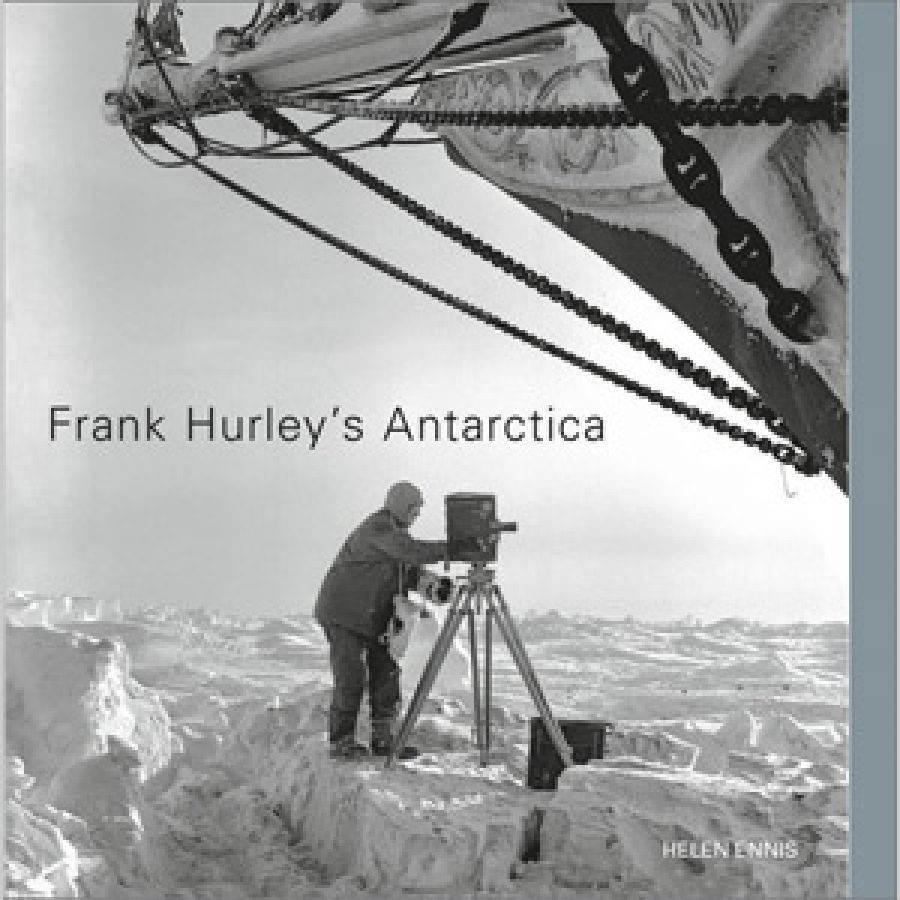
- Free Article: No
- Contents Category: Art
- Review Article: Yes
- Online Only: No
- Custom Highlight Text:
In the relatively small field of Australian photographic publishing, Frank Hurley has attracted more than his share of attention. The reasons are clear: in the contemporary world, bound by prohibitions, Hurley is a photographer–adventurer of heroic proportions.
- Book 1 Title: Frank Hurley’s Antarctica
- Book 1 Biblio: National Library of Australia, $24.95 hb, 141 pp
This small but purposeful book has targeted its attention on five photographic expeditions Hurley made to Antarctica, notably the Douglas Mawson expedition of 1911–12 and the Ernest Shackleton one of 1914–17. Using an archive of photographs and diaries donated to the National Library by the Hurley family, author Helen Ennis has a wealth of primary information to work with, and deftly combines photographs and transcriptions from diaries to present an animated view of the man and his work.
What emerges is a picture of Hurley as a true Son of Empire, a photographer with a physical approach to the world who was fearless in the face of its extremes and passionate in his desire to record new territories. He was a pioneer in polar photography (and film-making) with ‘no role models, no other photographers or photographs to study’. The demands of the environment would have daunted most as Hurley carried heavy crates of equipment, glass plates and cine film; battled blizzards and lack of light; and struggled to process his plates in a temporary darkroom. When Shackleton’s boat, the Endurance, was crushed in pack ice and the men were forced onto an ice floe for five months, Hurley had to abandon more than four hundred exposed glass plates. That he managed to keep any is remarkable.
Hurley, unconstrained by the factual dimension of photography, often combined negatives to highlight the drama of his scenes. His concern was always to maximise visual impact. As this fine book shows, the results still have the power to engage and thrill.


Comments powered by CComment